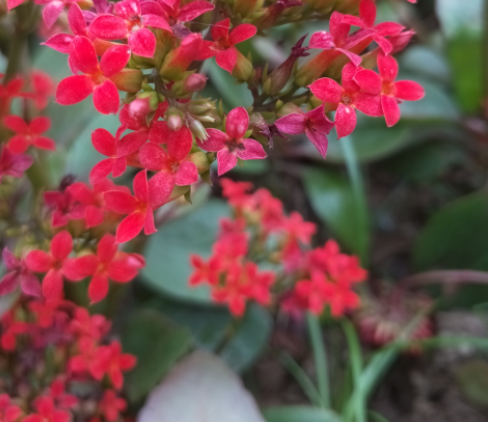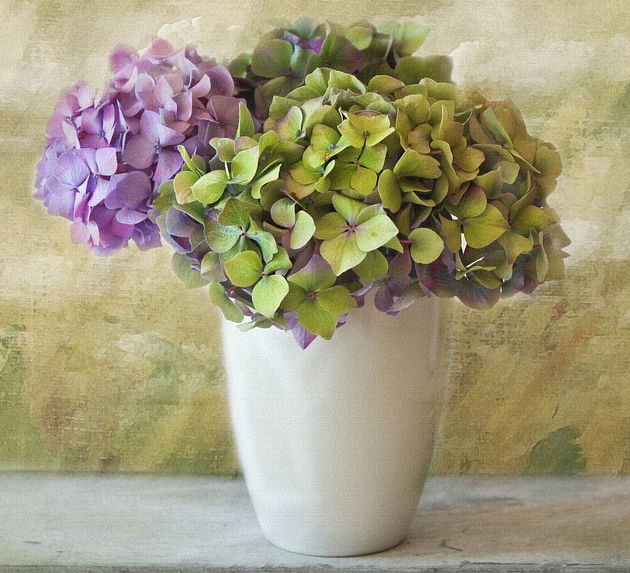Are the longevity flowers called "birthday flowers" poisonous? How to breed it?
Longevity flower, also known as "birthday flower", is a perennial succulent herb, which usually blossoms around Christmas. It is welcomed by people because of its bright, beautiful and good meaning. Many flower lovers want to breed, but they are rumored to be poisonous, so they are worried. Are longevity flowers really poisonous? How to breed it?

Are longevity flowers poisonous?
When many people raise flowers at home, they always worry that they are toxic, but there are also many flowers that are weakly toxic or non-toxic. For example, there are rumors that it is not possible to breed longevity flowers indoors, which is somewhat misleading. In fact, longevity flowers are non-toxic, and it is entirely possible to breed them indoors, whether there are children or pregnant women at home. The longevity flower is a potted flower that is easy to raise. Its small leaves are dense and green, and the flowers are colorful. Because the flowering season is approaching Christmas and the flowering period is long, it has become a festive flower for people to set off the festive atmosphere. In addition, the leaves of longevity flowers are dense, dark green and shiny, and have high ornamental value. Put longevity flowers in the newly decorated house. Can not only beautify the home environment but also play the role of absorbing harmful gases, is a very ideal indoor potted flowers.
Second, how to raise longevity flowers?
1. Flowerpot selection
Before breeding longevity flowers, you should first choose flowerpots. Longevity flowers are prone to rot in heavy clay, so flowerpots for longevity flowers are generally suitable to be cultured in small, permeable loose sandy soil and clay pots, but considering the beauty of the interior, you can set up a plastic pot or porcelain pot on the outside, or grow it directly in purple sand pot or plastic pot. Then a layer of broken wood, carbon blocks or broken hard plastic foam blocks can be placed at the bottom of the basin to enhance permeability, specifically, rotten leaf soil and vegetable garden topsoil can be mixed in the same amount plus 5% Mel 8% curing soil, and bone powder or nitrogen, phosphorus and potassium compound fertilizer can be used as base fertilizer.
2. Moisture control
The longevity flower is a succulent plant, which contains more water in the body and is more resistant to drought and waterlogging, so watering needs to keep the air dry in order to make longevity branches flourish, keep it moist if the basin soil is dry in spring and autumn, and water it once every 3 days or so. It should be watered less in summer, preferably once every 5-7 days. If the longevity flowers raised outdoors should be protected from rain during the rainy season, so as to avoid rotting roots, withering leaves and even death, water should be watered every 7 days or so in winter.
3. Rational fertilization
Longevity flowers are suitable for survival under sufficient fertilizer conditions. in order to promote the growth of stems and leaves, liquid fertilizer dominated by nitrogen can be applied 2-3 times after planting on longevity flowers for 15 days or 15 days after the old plants are divided into plants. in order to promote their rejuvenation, liquid fertilizer dominated by nitrogen can be applied once. Except for stopping application in summer, only nitrogen, phosphorus and potassium compound fertilizer can be applied in the rest of the time. In order to avoid perishability of flowers and leaves, pay attention to do not put fertilizer on the leaves when applying fertilizer. Rinse off the leaves with water if you accidentally get dirty. In addition, the flowering period of longevity is long, and in order to prevent the late flowers from becoming smaller and lighter due to lack of fertilizer, it is necessary to apply thin nitrogen, phosphorus and potassium fertilizer or 0.2% potassium dihydrogen phosphate solution once a month during flowering.
4. Lighting control
Longevity flowers are suitable for survival in a sunny environment. Except for shade in the midsummer afternoon, longevity flowers need to be placed in sunny places for at least 4 hours of direct light to grow healthily and exuberantly. In addition, the flowerpot should be turned around every half a month, so that it can be evenly exposed to light to avoid partial crown, thus reducing the ornamental value. placing in the semi-shade will make the stem, thin leaves, thin flowers, less color and light, such as too shade, it is easy to make the flowers dim and then wither and wither.
5. Suitable temperature
The most suitable temperature for cultivating longevity flowers is 15-25 ℃. If the temperature is higher than 30 ℃, it will grow slowly and enter a semi-dormant state. If the temperature is lower than 10 ℃, it will stagnate. Below 8 ℃, it will make the leaf color of longevity flowers turn red and the florescence will be delayed. Below 0 ℃, it is easy to freeze to death. Therefore, in the afternoon of summer, you should pay attention to avoid strong light exposure, and should be placed in the half shade with sufficient scattered light. Also pay attention to sprinkling water to the nearby ground for ventilation and cooling, but not on the whole plant. Sunshine can be seen gradually in autumn, making it transform from vegetative growth to reproductive growth. When the winter temperature is as low as 10 ℃, it should be moved to the indoor to be placed in front of the balcony to see the sun. The temperature at night should be maintained at 10 ℃, 15-18 ℃ during the day, and it can bloom in December.
Summary: the above is about longevity flower toxicity and breeding methods related to the introduction, I hope to help friends in need!
Time: 2019-03-13 Click:
- Prev

How much is a yew, the giant panda in plants? What are the planting prospects?
Taxus is a precious plant, an ancient tree species left over from Quaternary glaciers, which is listed as a first-class protected plant in China, so it also has the title of giant panda among plants, which is very suitable for planting in the north and south. So how much is a yew? What are the planting prospects? How much is a yew?
- Next

Hydrangea (hydrangea) how much is a pot? How to breed?
Hydrangea, also known as hydrangea, is a famous ornamental plant in the Yangtze River Basin. Its flower type is plump and beautiful. The color can be red or blue. The ornamental value is extremely high. Many people who like flowers and plants in life have a special liking for hydrangea. They all want to raise but do not know the method. How much is hydrangea? How to breed
Related
- Fuxing push coffee new agricultural production and marketing class: lack of small-scale processing plants
- Jujube rice field leisure farm deep ploughing Yilan for five years to create a space for organic food and play
- Nongyu Farm-A trial of organic papaya for brave women with advanced technology
- Four points for attention in the prevention and control of diseases and insect pests of edible fungi
- How to add nutrient solution to Edible Fungi
- Is there any good way to control edible fungus mites?
- Open Inoculation Technology of Edible Fungi
- Is there any clever way to use fertilizer for edible fungus in winter?
- What agents are used to kill the pathogens of edible fungi in the mushroom shed?
- Rapid drying of Edible Fungi

